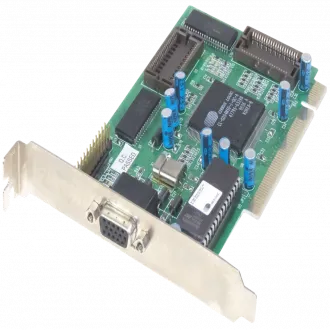The Cirrus Logic 5430/40 PCI 1MB video card holds a significant place in the history of graphics technology, representing a notable advancement during its time. Released in the mid-1990s, it catered to the needs of desktop computer users seeking improved graphics performance and visual quality.
Equipped with 1MB of video memory, the Cirrus Logic 5430/40 offered a substantial upgrade over its predecessors. This additional memory allowed for higher-resolution displays and improved color depth, resulting in more vibrant and detailed visuals. Users could enjoy smoother graphics rendering and enhanced image clarity, which greatly enhanced their overall computing experience.
As a PCI (Peripheral Component Interconnect) video card, the Cirrus Logic 5430/40 ensured compatibility with a wide range of desktop computers. The PCI interface provided faster data transfer speeds compared to older bus architectures, enabling smoother graphics performance and reducing lag during graphics-intensive tasks.
The Cirrus Logic 5430/40 supported various display resolutions and color depths, offering users the flexibility to choose settings that best suited their needs and monitor capabilities. This versatility made it suitable for both professional applications and gaming, allowing users to enjoy high-quality graphics in various contexts.
While the Cirrus Logic 5430/40 may seem outdated by today's standards, it played a significant role in the evolution of graphics technology. It contributed to the growing demand for improved visual experiences, paving the way for more powerful and advanced graphics cards that followed.
Overall, the Cirrus Logic 5430/40 PCI 1MB video card provided users with enhanced graphics performance, increased memory capacity, and improved visual quality during a time when such advancements were highly sought after. Its impact on the graphics industry should be acknowledged as it represents a stepping stone in the journey towards the impressive graphics capabilities we enjoy today.
